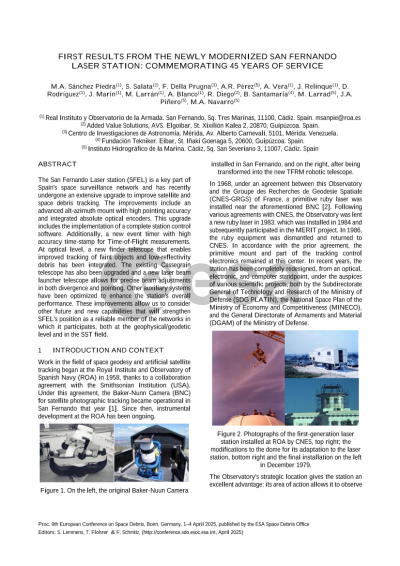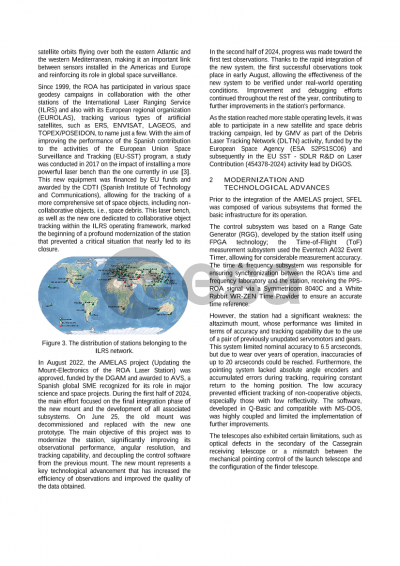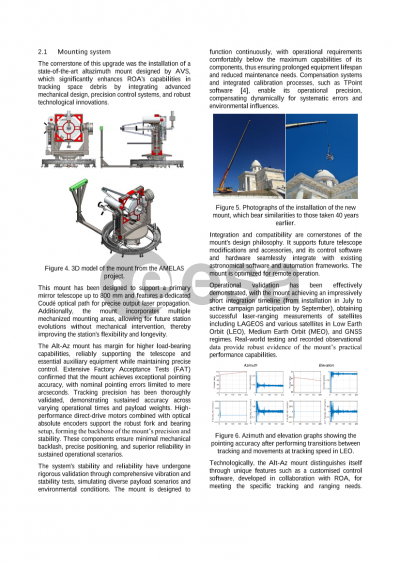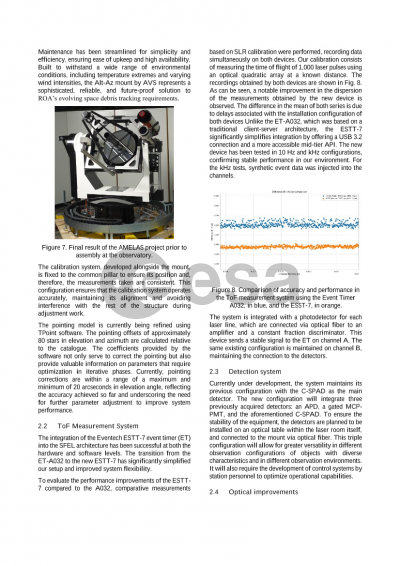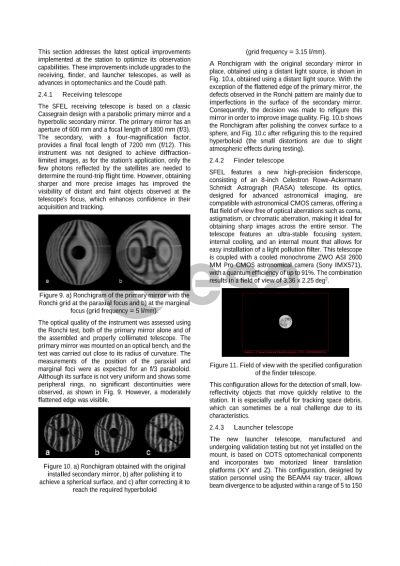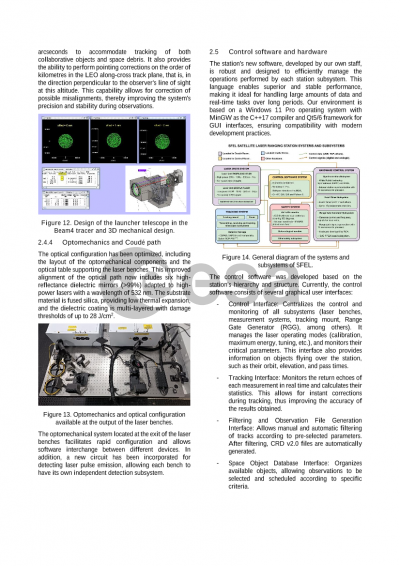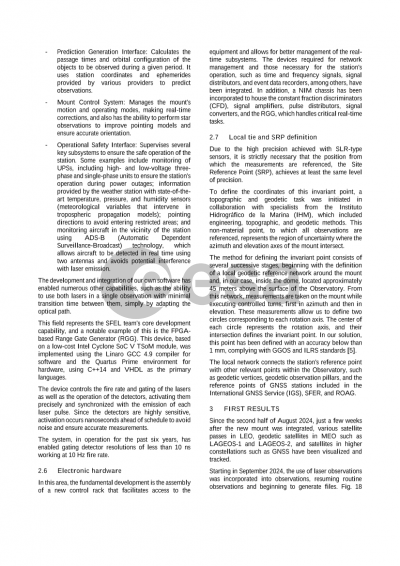Document details

Abstract
The San Fernando laser station (SFEL) serves as a key component of Spain’s space surveillance network, having recently undergone comprehensive modernization efforts aimed at significantly improving its satellite and space debris tracking capabilities. This enhancement is primarily centered around the integration of an advanced alt-azimuth mount developed by AVS, a Spanish global SME company recognized for its contributions to significant scientific and space initiatives.
The newly installed mount incorporates state-of-the-art optical encoders and direct drive systems, supporting arcsecond-level pointing errors. This innovative design minimizes mechanical friction, leading to reduced maintenance needs and improved system longevity and versatility. The implementation of this mount necessitated meticulous geodetic calculations, including GNSS observations and classical surveying methods, to accurately establish a new invariant point and local tie at the Observatory, achieving millimeter-level precision.
To further enhance the station's operational capabilities, a new event timer has been integrated into the Time-of-Flight (ToF) measurement system, providing timestamps with precision of 1.5 picoseconds. This advancement is crucial for scientific research and practical applications, such as orbit refinement. The installation of a dedicated finder telescope, a Celestron RASA 8-inch paired with a ZWO ASI 2600 CMOS camera, enables the precise detection of faint, rapidly moving objects, thus improving tracking of low-reflectivity space debris.
Moreover, the existing Cassegrain reception telescope has undergone optical enhancements to improve image quality and visibility of distant celestial objects. The mount is designed to support a future telescope with an aperture of up to 800 mm, ensuring SFEL’s preparedness for forthcoming technological advancements in observational capabilities.
Scheduled for installation in late 2024, a new laser beam launcher telescope will facilitate precise adjustments to laser beam steering and divergence. This system, designed by station personnel utilizing ray tracing software, incorporates commercial off-the-shelf (COTS) components and high-reflectance mirrors along the Coudé path to minimize laser beam losses over extended distances. An upgraded weather station is also now operational, providing essential atmospheric data—temperature, humidity, and pressure—that enhances the accuracy of laser beam measurements applying the existing propagation models.
In addition to these advancements, the station’s electrical systems have been upgraded to include high-capacity uninterruptible power supplies (UPS), forming part of a robust security framework that ensures operational continuity during power outages. A latest generation control computer has been installed, capable of managing the increased data flow from various subsystems, thus enhancing SFEL’s overall data processing capabilities.
Looking forward, SFEL plans further enhancements, pending the acquisition of necessary funding. These plans involve the construction of a high-performance dome to accommodate the rapid movements of the new mount, suitable for reentry tracking, the installation of an 800 mm reception telescope to enhance reception capacity, and the integration of a high-frequency laser for simultaneous use with cooperative and space debris tracking initiatives under EU SST and ESA programs. Additionally, plans include the establishment of an integrated control center to unify the Observatory's sensors, optimizing operations and strengthening the station's response to the growing demands of space surveillance.
These modernization efforts underscore SFEL’s commitment to advancing its contributions to satellite tracking and space debris management. With enhanced precision and technological capacity, the station is poised to assume a more prominent role in global efforts toward space safety and sustainability. This ongoing progress honors the legacy of Dr. Manuel Catalán Morollón, whose dedication, vision, and collaborative spirit continue to inspire the station's mission.
Preview
